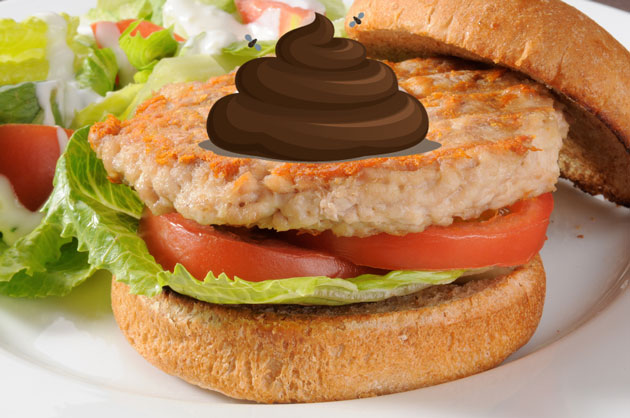
I suddenly, inexplicably, find myself attracted to Chicken McNuggets, although I don’t think I want to eat any.
When we look at the nutrition labels of processed or fast foods, there’s all of this…stuff. It’s a mystery. What the hell are carrageenan and caseinate and lycopene? Why are they there? What do they look like?
In Ingredients: A Visual Exploration of 75 Additives & 25 Food Products, photographer Dwight Eschliman and writer Steve Ettlinger (whose scores of books include Twinkie, Deconstructed) conspire to demystify common ingredients and products ranging from Kraft Singles to Red Bull. You might look at the deconstructed McNugget above and find yourself thinking, “How strangely beautiful. But do you really need 40 ingredients to batter and deep-fry a hunk of reconstituted chicken?”
Ettlinger helps us understand why: “When you bake a cake or make some commercial food product by the millions in a large factory with industrial machinery and ship it around the country, where it sits on store shelves for weeks, you might add something to a batter to make it easier to pump through hoses. You might add something to keep the bubbles in a batter from getting crushed at the bottom of an enormous kettle. You might add something to keep the final product from losing moisture or flavor in storage or so it doesn’t collapse during transit. You might add something or use special ingredients so it doesn’t spoil quickly. In short, you use food additives to achieve the scaled-up goals that the home cook addresses quite differently.”
Here are visual breakdowns for a few other products you may have sampled. You might even be eating one of them right now.




The individual ingredients pages, meanwhile, each contain a finely rendered photo of the raw powder or syrup or oil, complete with chemical structure, synonyms, and a lively description of its history and uses. Take carmine, an alluring magenta powder that dates back to the Aztecs and is used to color, among other products, Campari and boysenberry yogurt: “Extracted from the dried body and eggs of the female cochineal insect, which accumulates on the paddles of the prickly pear cactus (genus Opuntia) native to Mexico and South America, one pound of this colorant requires about 70,000 insects. They are simply brushed off the cactus, dried, and mixed with aluminum or calcium salts.”
A little less natural, if just as pretty, are these…

Red 40 (which has an ungodly long chemical name) is one of the most common colorants, Ettlinger writes. But oddly enough, “it’s made from a few gray powders, one of which is nitric acid. Yellow No. 5, also known as tartrazine, is made similarly but with tartaric acid. Combined to create neutral salts akin to Epsom salts, the subingredients for most artificial colors originate as petroleum products such as naphthalene and benzene in China. Liquid acidic mixtures are neutralized with a dose of sodium hydroxide (lye) in giant stainless steel vessels called coupling tanks. Once thoroughly reacted, mixed, filtered, and purified, colors are atomized in a spray drier with walls so hot that when the mist hits them, it dries immediately into a perfectly colored powder.”
Tasty! Here’s another common one:

“Many consumers think cheddar cheese is naturally orange,” Ettlinger writes, “which is not surprising since dairies have been coloring their cheddar since the 16th century, attempting to make inferior cheeses resemble the top-quality ones made yellowish by the high carotene content of fresh spring and summer milk. Likewise, some may think of Spanish rice as naturally yellow, when in fact it is annatto doing the job.” Annatto also imparts “a delicately earthy, peppery flavor,” he notes, which is why some people call it “‘poor man’s saffron.'”
We could go on, but the authors would rather you buy their book, which publishes on September 29. Apart from being full of fascinating facts, it may just ease your mind a little bit. We tend to think of food additives as evil, but most of them are fairly benign, and necessary. Unless you plan to make everything from scratch, that is. And we all know that ain’t gonna happen.
So, bon appetit!

All photographs by Dwight Eschliman, from Ingredients: A Visual Exploration of 75 Additives & 25 Food Products (Regan Arts, September 2015)












